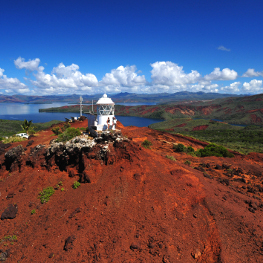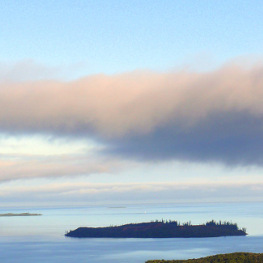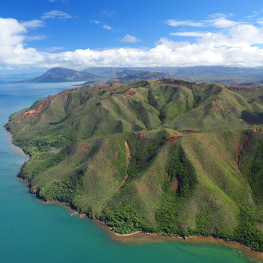Meticulously restored by enthusiasts, the now deserted village of Prony occupies a unique position in the history of New Caledonia. Indeed, in and of itself, it illustrates three historic phases: the penal colony, the wood industry and the early stages of mining on the Caillou (“pebble”), as the Grande Terre is affectionately known.
While New Caledonia’s discovery by the Europeans dates back to 1774 and admiral James Cook, it was not until later that France took possession of the territory in 1853. A year later, the Prony corvette left the Nouméa strait to explore the southern coasts. Travelling along the Woodin Canal between the Grande Terre and Ouen island, its captain Jean-Joseph de Brun, discovered a huge bay that he named after his ship.
The development of Nouméa city was constantly increasing the need for building materials, hence the decision was made in 1867 to send a team of 33 men to the bay, 29 of them “transported,” that is, convicts. There, they would set up a work camp called Sebert camp, intended to exploit the bay’s forestry resources.
The deserted village of Prony
Voir plus-
![old penitentiary area]()
From Sebert camp to Prony village…
Little by little, the camp became more organized and its first constructions came into being: a bread oven and living quarters. A hamlet formed. By 1873, the flourishing project had 20 “transported” workers. New solid constructions, such as the famous powder store, the remains of which can still be seen today, were built.
Having become an official relegation site in 1890, the work force continued to increase, reaching 635 people in 1898. But the fall in production yield and the cessation of convict convoys from 1897 made the site’s closure inevitable. It would be definitively abandoned in 1911.
-
![The village’s temporary resurrection]()
The village’s temporary resurrection in 1956
Definitively? Not quite. In 1956, an affiliate of SLN (Société Le Nickel) built a village on the penal colony’s ruins which would be inhabited by the families of miners employed in mineral extraction in the region until 1968, before fading into oblivion. During this time, the inhabitants made use of the bay’s hot water springs set up by the convicts from 1889.
Owner of the buildings since 2007, the Southern Province added the remains of Prony village to the supplementary inventory of historic monuments.
-
![Huge banyans immerse themselves in the memory of the site]()
Huge banyans immerse themselves in the memory of the site
The few vestiges of this period still existing today are as though imprisoned in huge banyans (a tree belonging to the ficus genus which can grow to gigantic proportions) covering the site. Regular visits organized by a heritage guide allow visitors to immerse themselves in the memory of a site whose magic remains very much alive despite the passage of time …








